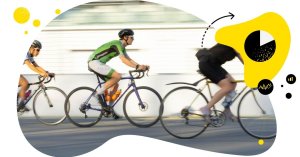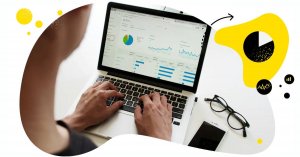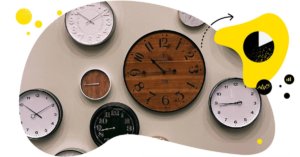I won’t lie to you – brand awareness is not the easiest thing to measure (probably why so many brands don’t do it or don’t focus on brand awareness campaigns at all.) But it’s possible. And this article is exactly about how to do it.
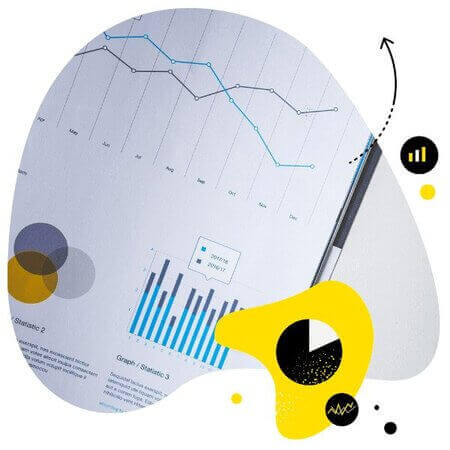
Social media analytics tool for teams
Analyze your social media performance and track your competitors. Create in-depth analytics reports in seconds – with an all-in-one social media tool.
What is brand awareness?
In a nutshell, it’s how well consumers know your brand. Do they think about you right when your product or services category pops up in a conversation? Do they recognize your logo or color palette when they’re randomly scrolling TikTok or Instagram? Do they know what you do when they see your brand name?
All of it (and more) is included in the term “brand awareness.” It’s how memorable and recognizable your brand is. And the goal of building brand awareness is to make you a “top of mind” brand – literally one of the first brands to come to mind when they think about a particular product or service. Which is what any brand wants, right?
So, what’s the problem with measuring brand awareness?
Because brand awareness is not directly related to sales, many brands see it as something less tangible and hence – less profitable. Which, though it might seem like it at first glance, is not true, of course.
The problem with brand awareness, though, is that it takes time to build it. Which means a brand awareness campaign might not bring immediate profits (just like a sales campaign would.) And for some business owners, this might mean it’s just not worth spending money on. So brand awareness campaigns are often pushed to the very end of the marketing backlog – there are always some sales opportunities that take priority.
I hate to break it to you, but most times, it’s a short-sighted approach. When you do allocate resources and some of your marketing budget to actively build brand awareness as a continuous activity, you will see results over time. Your sales campaigns will probably work even better because of it, too. So it just doesn’t make sense to ignore brand awareness.
Plus, there are KPIs and metrics you can use to measure brand awareness, too. And we’ll take a look at how to measure brand awareness on social media in particular, with helpful tools and ways to track the important stuff.
How to measure brand awareness on social media
Here are a few basic steps to follow to make sure you’re doing brand awareness right.
Get the right toolkit
Sorry to be so obvious, but that’s a step that can’t be skipped if you want to talk about effectively building and measuring brand awareness on social media. So I just had to start with it. Here are some tools to look into:
- You can use the native social media analytics tools to some extent. But most of them have limited timeframes you can analyze. Plus, the more social media channels you use, the harder it will become. Not to mention when you also want to track your competitors and compare results.
- A good solution would be to get a more comprehensive, third-party social media analytics tool like NapoleonCat. You can use it to measure your results on Facebook, Instagram, LinkedIn, and YouTube and follow key metrics like reach and engagement. Seeing them in one view next to each other helps draw conclusions and identify areas for improvement much quicker (even if you’re not an analytics expert.)
- Social listening tools will help you track brand mentions across social media and track metrics like sentiment or share of voice. (I’ll talk about metrics in just a second.)
- Website analytics (like Google Analytics) and SEO tools will help you analyze things like search traffic from social media to see what content works best for getting people interested in your brand (and create more of it.)
Identify key metrics and KPIs for your business
Part of why brand awareness seems so elusive is because it tends to mean different things for different businesses. So, to measure it, it’s important to decide what it means for your brand and what results you want to see from your brand awareness-building initiatives. Here are some of the most common metrics to keep in mind:
1. Share of voice
The share of the brand awareness pie, i.e., the percentage of the market conversations your brand takes up. And it directly translates into your brand authority and awareness compared to your key competitors. It will also guide you to what kind of publicity you need to focus on (if, for example, you’re good when it comes to press mentions but don’t excel in the social media department.)
How to calculate it: Share of voice is given in percentages, and it’s the number of your brand metrics divided by total market metrics times 100.
How to measure it: Most social media listening tools like, for example, Brand24 or Mention will let you measure share of voice, often with super clear visual charts.
2. Brand sentiment
It’s not enough to make sure people are talking about your brand. You’ll want to know what they’re saying about you. And I know they say that bad publicity is better than no publicity, but we don’t have to agree on that.
How to calculate it: Brand sentiment can be positive or negative (or neutral), and you’ll want to look at the proportions.
How to measure it: Brand sentiment can be measured across different channels – from social media comments to customer surveys, reviews, and other customer service channels. For social media comments, use the Social Inbox in NapoleonCat to assign sentiment to customer conversations and then analyze the share of positive and negative sentiment to figure out what areas need improvement.
As you can see, it’s a brand awareness metric as much as it is a customer service metric that lets improve customer communications (and brand image as a result.)

3. Profile impressions
It’s one thing to track your content impressions and reach – which, of course, clearly show you how much people see your brand content. But for brand awareness on social media specifically, tracking page or profile impressions is also important – as it shows you how many people actually go to your profile or page to see what you’re about (and perhaps watch more of your content or go straight to your website.)
It’s a little bit like your branded search volume – which is the number of times people search for your brand name online – but for social media. The difference is that people might view your page or profile from social media search or they can also come across your content, or even come from a link on your website or another place online.
How to calculate it: This one’s easy, as it’s the number of views your social media profile or page gets (from whatever source, whether that’s searching for your page or referral traffic, e.g., clicking your brand name from a post or ad they see in their feed.)
In NapoleonCat’s analytics, a page view is counted when an update is at least 50% on screen for at least 300 ms, or when it is clicked, whichever comes first.
How to measure it: Most social media analytics tools will show you profile/page impressions. NapoleonCat will show you a graph with impressions over time, with a world map of lifetime impressions you can download as an image file.

4. Profile mentions
Brand mentions are an essential metric for measuring brand awareness across online channels. On social media, you can also track profile mentions to monitor how often people mention, for example, your Facebook Page.
You can also monitor your brand name as a keyword to spot conversations people have on public social media profiles that talk about your brand without mentioning your profile directly.
How to calculate it: Another straightforward one – it’s measuring the number of times your brand profile is mentioned on a specific social media channel (or overall.)
How to measure it: In NapoleonCat’s analytics tool, you can track page mentions next to page impressions. You’ll see it on a graph and in a table, tracked daily, with data on mentions in comments and in other posts.
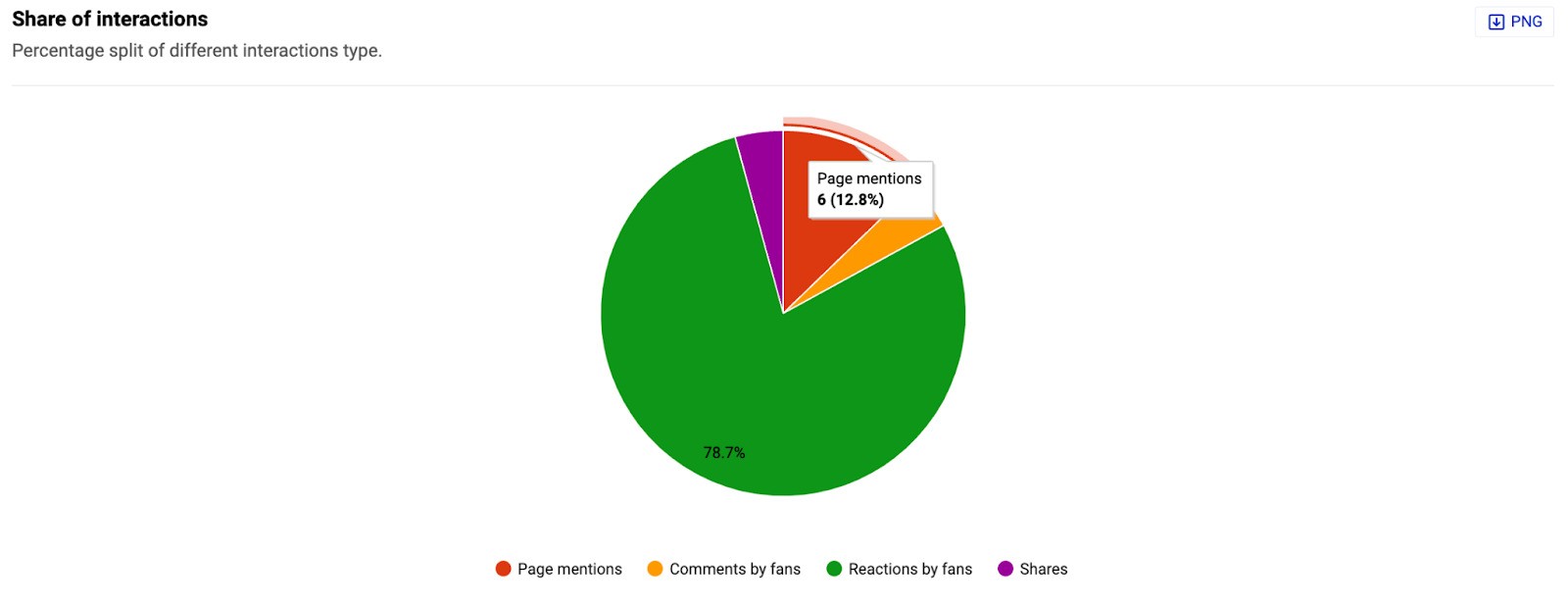
5. Social media engagement
It’s an obvious one for measuring social media marketing campaign performance, but it can be equally important for brand awareness. Engagement helps increase reach and brand recognition not just for your followers, but a wider target audience.
How to calculate it: With NapoleonCat, you can measure your overall engagement rate which, depending on the social media platform, is calculated as the number of interactions to each post (reactions, comments, shares) divided by the number of people following you on a given day (or the number of impressions.)
Comparing engagement rates of several social media profiles is also an element of competitive analysis and will help you with benchmarking.
How to measure it: The easiest way is to go to your analytics in NapoleonCat, and it’s all there calculated for you. Here’s an example from a competitive analytics report including several social media profiles:
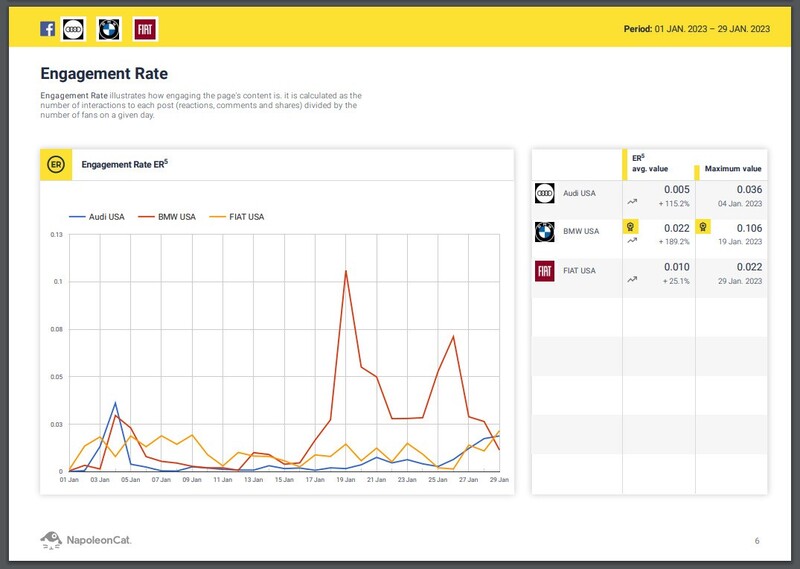
6. Conversions from social media.
Yes, your brand awareness campaigns – though their main goal is usually not sales – can also result in conversions. And it’s definitely what you should track and measure in this context.
How to calculate it: Your conversion rates will obviously depend on how you’ll define conversions for specific campaigns. This could be clicks to your website from a social media post, signups, even new followers. Or it could even be actual sales.
How to measure it: Your go-to tool for this will probably be Google Analytics. If you use utm tags for the links in your social media campaigns, you’ll be able to not just see the social media channel, but the exact campaign that brought in the conversions. Which is super helpful in determining the effectiveness of your brand awareness campaigns in general.

Social media analytics tool for teams
Analyze your social media performance and track your competitors. Create in-depth analytics reports in seconds – with an all-in-one social media tool.
Generate reports regularly
No, not just for the sake of creating reports (I know some companies do that ;)) Checking your results on a regular basis will let you spot how the level of brand awareness changes over time and which marketing efforts you should intensify (or stop) to increase/keep the upward trend.
And again, you can use NapoleonCat’s reports to do that:
- Select the social media profile(s) to include in the report. You can create a report for a single or multiple profiles (for FB), and you can also compare social media profiles side by side as well as report on your competition.
- Select the metrics you want to include from the brand awareness perspective.
- If you don’t want to to it manually every time you can schedule a weekly, monthly, or quarterly report and automatically email them to all the stakeholders who care about your brand awareness metrics.
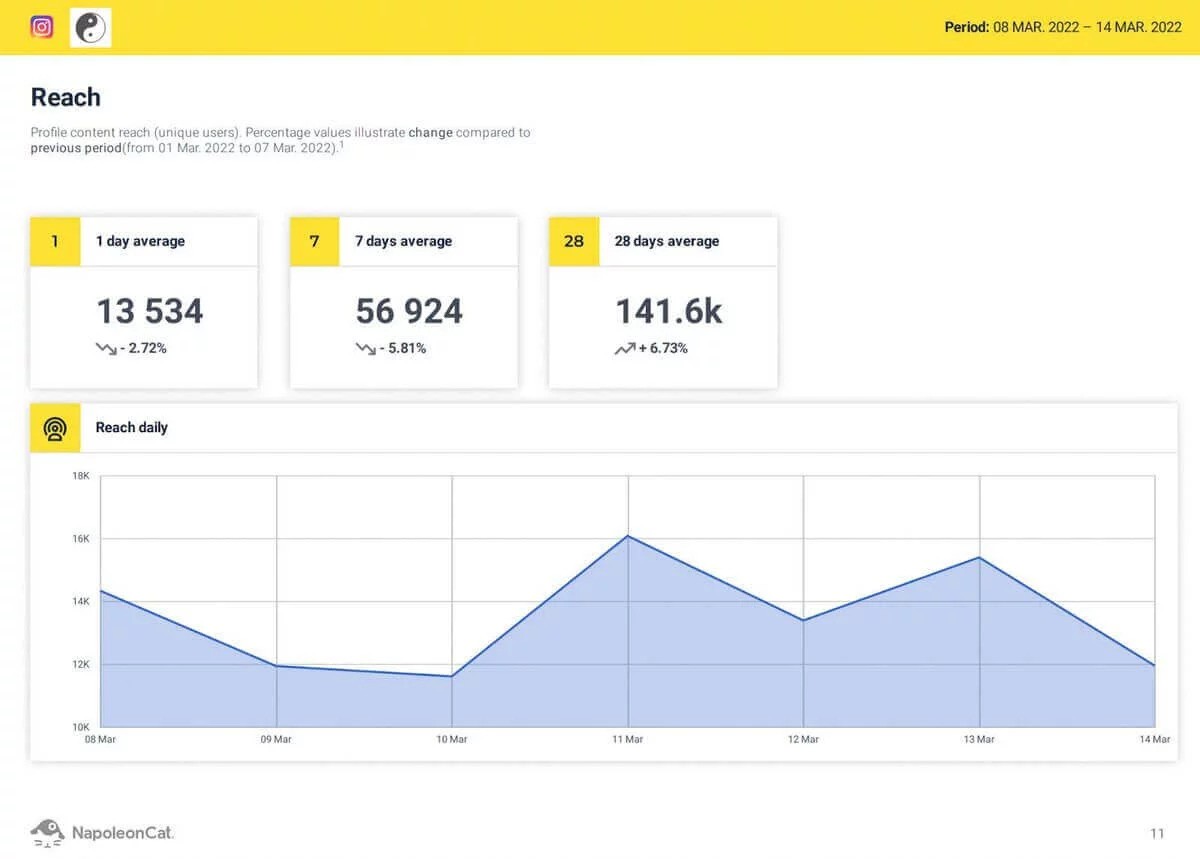
Why measure brand awareness, anyway?
As you can see, brand awareness is not as elusive as it might seem, and you can actually put a number (or numbers) on it. Plus, it’s an important element that helps boost sales in the long run. The more visibility and recognition your brand gets, the more likely people are to buy from you.
Brand awareness is also the first step towards brand loyalty – the marketer’s holy grail that gets you loyal customers, brand ambassadors, and a whole new level of brand trust. So, don’t skip it and start measuring it instead.
We highly recommend you test NapoleonCat completely for free here, no credit card required during signup 😉 Good luck!
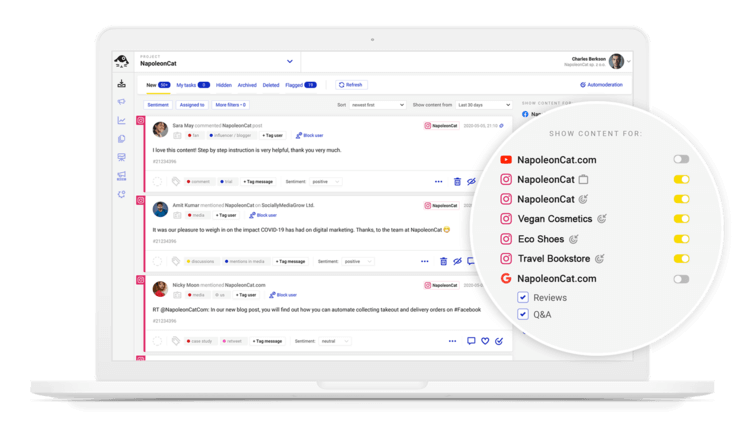
Simplify Social Media
Management with One Tool
- Manage & reply to comments and DMs in one place.
- Monitor ad comments from multiple accounts.
- Automate answers to repetitive questions.
- Schedule posts to multiple accounts, on desktop.
- Analyze performance and monitor hashtags.
- Keep track of your competition.
- Create or schedule in-depth reports in seconds.
You may also like:
- Top 10 Social Media Analytics Tools for Teams
- How to Track Competitors on Facebook
- How to Analyze Competitors on Social Media
- How to Track Competitors on Twitter
- How to Analyze Competitors on Instagram
- How to Create an Instagram Analytics Report
- Meet The Best Social Media Benchmarking Tool
- Top 10 Competitive Intelligence Tools


